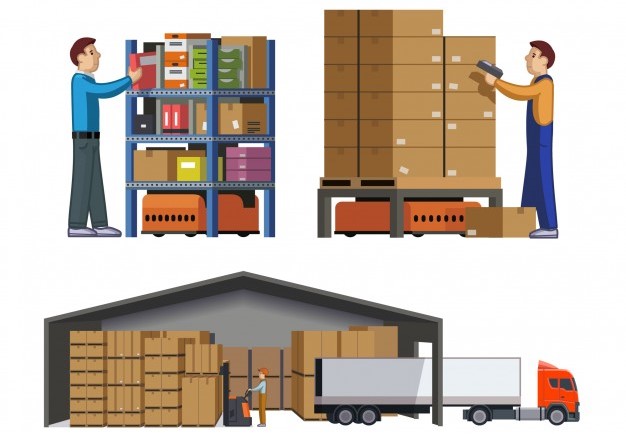What is asset tracking?
Businesses use different kinds of assets to run their daily operations. Each department has its own set of inventory circulating within and sometimes, across its team. Not keeping tabs on the movement of your assets can gear you towards a management disaster.
For this reason, companies strictly conduct asset tracking practices to monitor where and by whom their items are being used at a given time. It makes business workflows more visible and gives companies access to real-time data.
Owing to its importance in running successful operations, asset tracking is widely practiced in the following industries:
- Healthcare
- Distribution and Retail
- Construction
- Education
- Hospitality
- Information Technology
Asset tracking offers multiple benefits. It automates workflows related to movements in your assets. You no longer need to manually enter data while checking out your equipment to different employees. Elimination of manual typographical errors and faster checkout processes allow you to reach higher efficiency and productivity levels.
It generally involves the use of a centralized database to store asset information. This keeps all your departments on the same page so they can easily collaborate on mutual office tasks.
Opting for a cloud-based asset tracking solution is even better. It keeps all your recorded data secure with simultaneous backups. With a well-grounded asset tracking solution, you never lose out on essential information.
For seamless asset tracking, the use of an online asset tracking solution is all the rage these days. It is easy to scale up if your business is growing. It also lets you take a host of actions.
These may include:
- Generating customized labels for all your equipment
- Carrying out automated procurement
- Checking in assets for maintenance and repair
- Tracking usage history of different items
- Monitoring work orders
Types of tracking systems
There are many systems out there for you to track asset movements. You can select the one that best suits the nature of your workflows. The three main types are listed below.
1. Barcodes

Adopted in the 1970s, the barcode system has been a popular choice of many industry sectors. Despite being one of the oldest asset tracking systems, it gets frequent updates to stay relevant to the latest technological landscapes. The biggest advantage of deploying this system is its economic feasibility.
Since they are cheaper to buy, companies normally purchase barcode tags in bulk. They are extremely useful for tracking small sized low-value items. Barcode labels are multifaceted and can be read by both hand-held scanners and smartphone applications. They also come in laminated versions so they can withstand relatively harsh work environments.
2. RFID
RFID tags are a little more advanced than barcodes. They capture asset data using radio signal emissions. RFID tracking systems operate with a wider capture radius so they can be used in places where assets are not easily accessible, for instance, in mine shafts.
However, RFID tracking systems are more expensive to implement. They are not suitable for smaller companies with tight budgets and are only recommended for tracking high-value items.
3. Active GPS tags
Sectors like retail and construction that send assets to remote project sites make use of active GPS tags. These tags send location alerts to a server on a regular basis so you always know where your inventory is.
However, this tracking system relies big time on continuous connection to certain satellites so it may be prone to connectivity disruptions. It is also costly to implement and only suggested for use by wealthy corporations.
Asset tracking: What’s next?
Selecting an appropriate asset tracking system for your business is not enough. You also need to keep up with the latest technological advancements to make the best use of it.
Here are the five latest trends in asset tracking you should know about.
1. Real-time data and analytics

Accurate information about your assets is key to effective decision making. You need to know how much of your stock is being used up to procure more of it.
Similarly, you need to keep tabs on the operational life cycle of your equipment to schedule timely maintenance. You might otherwise end up struggling with prolonged downtime. To mitigate these issues, it is important for your employees to know the real-time location and status of your equipment.
Access to real-time data paints a comprehensive picture of the business for management and helps them devise well-grounded strategies. It also leads to greater asset visibility by pulling down the risk of theft and misplacement.
2. Upgraded indoor positioning technology
An indoor positioning system (IPS) has to do with locating people and objects inside a building using magnetic fields or radio signals. Up until now, it has been labor-intensive and costly to implement. Most companies have also been avoiding it due to high upkeep requirements and discontinuity of signals in harsh work environments.
However, recent improvements like wireless networking technology have improved the reliability and precision of indoor positioning. Introduction of accurate algorithms and blueprint buildings have drastically upgraded location sensing of assets.
3. Artificial intelligence
Regular maintenance greatly extends the useful life of an asset. Use of artificial intelligence (AI) spots when equipment is faulty and needs to be checked in for repair.
Whether it is a malfunctioning projector in a conference room or a faulty autoclave in a hospital, AI can spot the issue instantly. Paired with active GPS tags, it helps you locate the faulty unit so you can repair or replace it as needed.
4. Mobile computing

Almost all industries require their employees to travel off premises to carry out business tasks. It is not always feasible for workers to rush to their designated workplaces, laden with check out tools. Thus, many companies today are resorting to mobile computing.
Most asset tracking solutions come equipped with mobile applications which you can install on your devices. They help you clock in relevant asset information anywhere, anytime.
Mobile applications put less time between you and your assets. You no longer have to wait to reach your desktop to record asset data. It also gives you an upper hand on your equipment even if you’re on a day off from work.
Mobile computing also helps with spotting instances of unexpected downtime. Any equipment breakdowns and machine failures can be alerted of from remote project sites. You can then send the technical team to the field to fix the issues.
5. Blockchain data records
Organizations with humongous data can make great use of blockchain technology. It deals with splitting business information into smaller blocks or units and linking them with relevant past transactions using ‘chains’.
This keeps all your data centralized in a digital form without any central authority. It is shared with everyone but is immutable so nobody can alter it. The main advantage of blockchain is that it preserves previous records as well. Having knowledge of past utilization patterns is key to improved fixed asset management.
Most fixed assets last more than one business year. Their performance needs to be constantly monitored over their lifespan to make sure they work effectively. Blockchain helps track asset operation over their useful lives. Having access to life cycle records of all assets can give better insights on how to improve the overall performance of your business.
Compatibility with existing applications is key!
It is crucial for businesses to comply with the latest technological trends in asset tracking. It not only takes their operations to move up a notch but transforms how businesses record and interpret data when it comes to managing assets.
To make the best use of development in the asset tracking landscape, you need to make sure whichever new technology you decide to implement is compatible with the existing applications you use. It helps you rise above the rest, whilst keeping you rooted so you do not incur significant infrastructure costs.
Read more: Whitepaper: Executing Education Asset Tracking Workflows
About EZOfficeInventory!
EZOfficeInventory is the leading asset management software that helps you track, maintain and report on equipment from anywhere, at any time.






